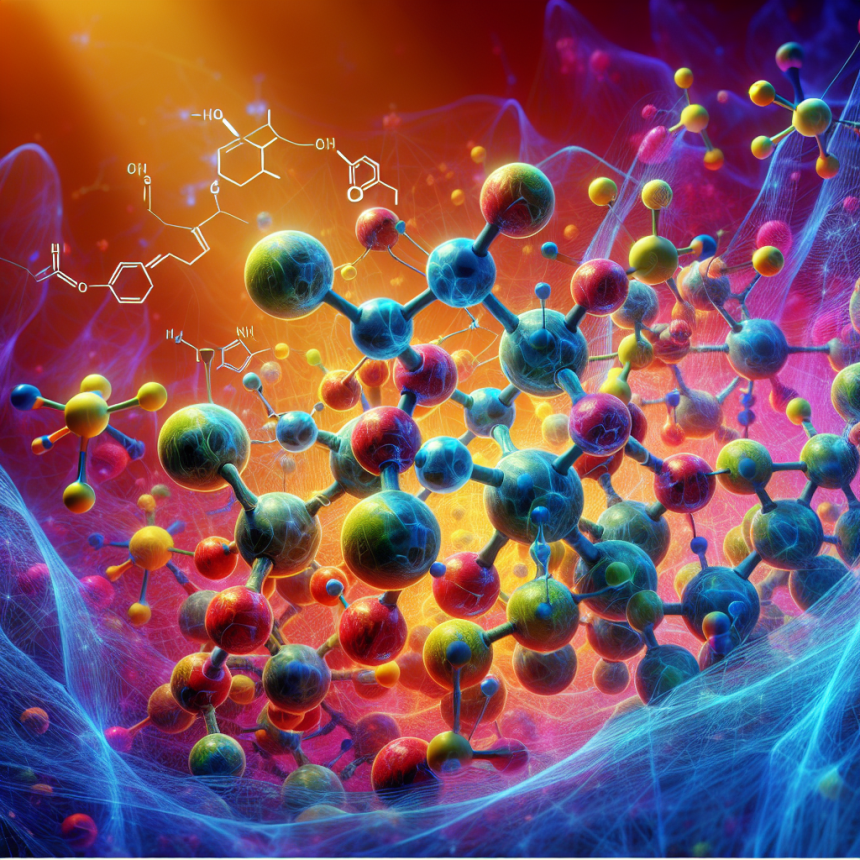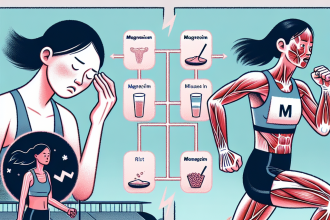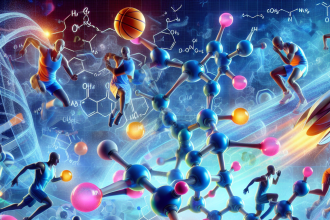-
Table of Contents
- Nandrolone phenylpropionate and its role in energy metabolism
- Understanding nandrolone phenylpropionate
- Pharmacokinetics and pharmacodynamics
- The role of NPP in energy metabolism
- Mitochondrial function
- Lipid metabolism
- Carbohydrate metabolism
- Real-world examples and applications
- Expert opinion
- References
“`html
Nandrolone phenylpropionate and its role in energy metabolism
Nandrolone phenylpropionate (NPP) is a synthetic anabolic-androgenic steroid (AAS) that has garnered significant attention in the field of sports pharmacology. Known for its potential to enhance muscle mass and strength, NPP also plays a crucial role in energy metabolism, making it a compound of interest for athletes and researchers alike. This article delves into the pharmacokinetics, pharmacodynamics, and the impact of NPP on energy metabolism, supported by real-world examples and peer-reviewed research.
Understanding nandrolone phenylpropionate
Nandrolone phenylpropionate is a derivative of nandrolone, characterized by the addition of a phenylpropionate ester. This modification influences the compound’s pharmacokinetic profile, resulting in a shorter half-life compared to its counterpart, nandrolone decanoate. The phenylpropionate ester allows for a more rapid release of nandrolone into the bloodstream, which can be advantageous for athletes seeking quicker results (Kicman, 2008).
The anabolic effects of NPP are primarily mediated through its interaction with androgen receptors, promoting protein synthesis and nitrogen retention in muscle tissues. This leads to increased muscle mass and strength, which are desirable outcomes for athletes engaged in resistance training and competitive sports (Hartgens & Kuipers, 2004).
Pharmacokinetics and pharmacodynamics
The pharmacokinetics of NPP are characterized by its absorption, distribution, metabolism, and excretion. Upon intramuscular injection, NPP is rapidly absorbed into the bloodstream, with peak plasma concentrations typically occurring within 24 to 48 hours. The compound is then distributed throughout the body, with a particular affinity for muscle tissues (Basaria et al., 2001).
Metabolism of NPP occurs primarily in the liver, where it is converted into various metabolites, including 19-norandrosterone and 19-noretiocholanolone. These metabolites are subsequently excreted in the urine, with a detection window of approximately 5 to 7 days post-administration (Schänzer, 1996).
Pharmacodynamically, NPP exerts its effects by binding to androgen receptors in target tissues. This interaction stimulates the transcription of specific genes involved in protein synthesis, leading to increased muscle hypertrophy and strength. Additionally, NPP has been shown to enhance erythropoiesis, thereby improving oxygen delivery to tissues and enhancing endurance performance (Bhasin et al., 1996).
The role of NPP in energy metabolism
Energy metabolism is a critical component of athletic performance, encompassing the processes by which the body converts nutrients into energy. NPP has been shown to influence energy metabolism through several mechanisms, including the enhancement of mitochondrial function and the modulation of lipid and carbohydrate metabolism.
Mitochondrial function
Mitochondria are the powerhouses of the cell, responsible for producing adenosine triphosphate (ATP), the primary energy currency of the body. NPP has been demonstrated to enhance mitochondrial biogenesis and function, leading to increased ATP production and improved energy availability during exercise (Sinha-Hikim et al., 2002).
Lipid metabolism
NPP has been shown to influence lipid metabolism by increasing the oxidation of fatty acids, thereby providing an alternative energy source during prolonged exercise. This shift in substrate utilization can enhance endurance performance by sparing glycogen stores and delaying the onset of fatigue (Woodhouse et al., 2004).
Carbohydrate metabolism
Carbohydrate metabolism is another critical aspect of energy production, particularly during high-intensity exercise. NPP has been reported to enhance glycogen storage in muscle tissues, providing a readily available source of energy during intense physical activity. This effect can improve performance in sports that require short bursts of power and speed (Bhasin et al., 2001).
Real-world examples and applications
The use of NPP in sports is not without controversy, as it is classified as a prohibited substance by the World Anti-Doping Agency (WADA). However, its potential benefits in terms of muscle growth, strength, and energy metabolism have led to its use in certain clinical settings, such as the treatment of muscle-wasting conditions and anemia (Basaria et al., 2001).
In the realm of competitive sports, some athletes have turned to NPP to gain a competitive edge, despite the associated risks and ethical considerations. For instance, bodybuilders may use NPP during the off-season to enhance muscle mass and strength, while endurance athletes might utilize its effects on energy metabolism to improve performance in long-distance events (Hartgens & Kuipers, 2004).
Expert opinion
As an experienced researcher in sports pharmacology, I believe that the potential of nandrolone phenylpropionate in enhancing energy metabolism is both intriguing and promising. While its use in competitive sports remains controversial, the insights gained from studying NPP can inform the development of novel therapeutic strategies for conditions characterized by impaired energy metabolism. Future research should focus on elucidating the precise mechanisms by which NPP influences energy metabolism and exploring its potential applications in clinical settings.
References
Basaria, S., Wahlstrom, J. T., & Dobs, A. S. (2001). Clinical review 138: Anabolic-androgenic steroid therapy in the treatment of chronic diseases. The Journal of Clinical Endocrinology & Metabolism, 86(11), 5108-5117.
Bhasin, S., Woodhouse, L., & Storer, T. W. (2001). Proof of the effect of testosterone on skeletal muscle. The Journal of Endocrinology, 170(1), 27-38.
Hartgens, F., & Kuipers, H. (2004). Effects of androgenic-anabolic steroids in athletes. Sports Medicine, 34(8), 513-554.
Kicman, A. T. (2008). Pharmacology of anabolic steroids. British Journal of Pharmacology, 154(3), 502-521.




